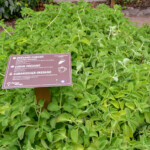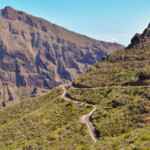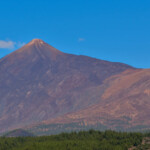
Las Palmas
The capital of Gran Canaria. The largest city in the Canary Islands – almost 400,000 inhabitants.
At the marina there are 5 sailing shops, several diving shops, there is no shortage of professionals in everything.
There is an industrial area on Islet with a good stainless steel shop.
The old town can be reached from the marina on foot (about 30 minutes) or by 2 stops by city bus. It is worth going to Columbus’ house, the Cathedral, walking through the streets of the old town, and on the way back, stop by for ice cream at one of the many ice cream parlors.
Las Canteras Beach is a must-visit place to stay in Las Palmas. With yellow sand, it stretches for almost two kilometers. There is a promenade by the beach, many cafes and restaurants where you can eat more or less tasty dishes.
Santa Catalina Park – the central park in the city, there is a large shopping center here, there is a full pub next to the park, tourist information and a bus terminus in the square. There is also a city ticket office (guagua ) – it works for yellow buses, and in January and before this year it was free to ride (at the beginning it was more than 0€ for the introduction). Many cultural events take place in the square in the park. There is a Cicar rental car next door.
Playa El Puertillo
Beach about 10 km from Las Palmas, can be reached by bus. There is empty sand in the middle and rocks with lava pools on the sides. On weekends there is a lifeguard until 6pm, but in a nice improvement there are crowds.
Santa Cruz
Marina Santa Cruz
The marina in the city center has about 300 berths for yachts from 9 to 60 m. It becomes in Y-booms, and when the marina is full, there is also a quay with a floating platform from the side of the ferry port – then it becomes the stern to the quay and the bow for mooring. Marine needs to be booked, but out of season a day in advance is enough. In high season (November-January) advance booking and sometimes advance payment. Access to the jetty and toilets requires a card (€ 10 deposit). Before entering the port, enter Port Control on channel 12VHF and before entering the marina, enter marinero on channel 9VHF. Give the number of the pier and marinaeo (and when two) come show the place, direct the moorings and help with mooring. When leaving outside office hours, the card is returned to the marinero and you can use the assistance with leaving (he suggests it himself). So that you need to enter the 12VHF channel to Port Control before going out, can you walk through the port area. In the office building there are toilets, showers (clean and with hot water), a launderette (extra charge) and there is a marinero room upstairs where you can find the card after mooring (as the marina office is closed). You get a universal card, which you have to replace in the practice of the marina with a card to the pier you are standing on. There is no petrol station in the marina, although you can use a tanker. There is a water and electricity pole at each station. In the adjacent marina (about 2 miles to the north) there is a Travel Lift, workshops and shops with parts for devices, wooden, metal.
City
Santa Cruz is the second (after Las Palmas) largest city in the Canary Islands. It has about 220,000 inhabitants. It is the capital of the provinces of the western islands (La Gomera, El Hiero and La Palma). It has two tram lines, city buses, a lot of shops (there are 4 sailing shops in the city). Nearest grocery port to Spar but quite small and expensive although also open on Sundays. A little further is the Hiper Dino and one tram stop from the marina is a large shopping mall. There are many pubs in the city, it is worth visiting one in the evening. There is a tourist information in the square by the fountain. In a city worth visiting, there is a palmiaruium – palm trees from all over the world grow there, and you can get a leaflet in Polish at the ticket office (entrance fee 6 €). Another focal point in the market, the main destination, but in a very historic building. Other than that, a small old town and pretty streets.
Park del Drago
In the village of Icod de los Vinos in the north of the island, there is Parque del Drago – an approx. 3-hectare botanical park (admission € 5). The oldest tree in the Canary Islands – the dragon dracaena – grows in the park. It is about 20m high and 10m high. Impressive. In the park there is also a “dracaena nursery” with young dracaenas, some other trees, a garden with medicinal plants and spices and a cave with volcanic tunnels that you can enter. There is paid parking in front of the garden (first hour €1.8) and a butterfly garden next to the park. From the park, it is worth walking the streets of the city and stopping for a coffee in one of the many cafes.
Garachio
Garachico was one of the first ports in Tenerife. Now there is a small marina, but you can enter it on safe, high-quality water. It is worth walking through the historic streets of the town and visiting the natural lava pools (they have ladders and stairs to climb, and the water is crystal clear). Nice paths have been built among these pools, the edges of which are painted not in white.
Maca
A beautiful village where the gorge of the same name begins. A winding mountain road (asphalt) leads to the village with passing places for larger cars. The views are insane, it’s Los Gigantes from the land side. Along the way, there are several marked viewpoints where it is worth stopping to admire the views and take some photos. There is limited time parking at the village (up to 2 hours)
Puerto de la Cruz
One of the most famous holiday resorts in Tenerife. Loro Park is located here (a botanical garden and a zoo with training shows, including killer whales). The town itself is very touristy, with lots of shops and cafes, and of course beaches. There is a huge free car park downstairs where you can leave your car and walk around the streets of the city.
Las Galletas
Marina del Sur
Marina in the south of Tenerife, a little further than Marina San Miguel. Nice ladies in the marina office, but that’s the end of the advantages of this marina. You stand on moorings with the stern to the berth (a marinero picks up the moorings), there is a large wave in the port, the floating piers are only anchored so they also “walk” on the wave. The toilets don’t have locks, the showers are rather claustrophobic, plus it’s the most expensive marina in the Canary Islands we’ve been to so far (over €46 for our boat) deposit for the card is €10, and here’s a curiosity – there are two ladies in the office, one writes out papers and issues invoices, and the other women programs the cards and collects and then returns the deposit for the cards.
Town
Las Galletas is not a big summer resort, there is a beach for surfers (large waves form among the rocks), some different shops, pubs and a dive shop (quite well stocked).
San Sebastián de la Gomera
Marina La Gomera
The only marina on the island where we are located. You have to book in advance, although there are plenty of vacancies out of season. The marina office is open from 8:30 to 14:30, but the “check-in” is until 12:00 and you have to leave the marina by then. The marina office is located upstairs in the building opposite the marina. A card is required to enter the piers and toilets (€5 deposit). The sanitary facilities are located at the other end of the marina (but the marina is not very big) and they are quite nice. It is in Y-booms (double) and the marina is approached along the path marked by yellow buoys (this way yachts do not collide with ferries).
City
The town, despite being the capital of the island, is more touristy than urban. There is a church, Columbus house, pretty streets with balconies and a beach to see. In the city there is Spar (rather small) and Tu Trebol, a large shop in the shopping center near the bus station. There are also some vegetable stalls.


































